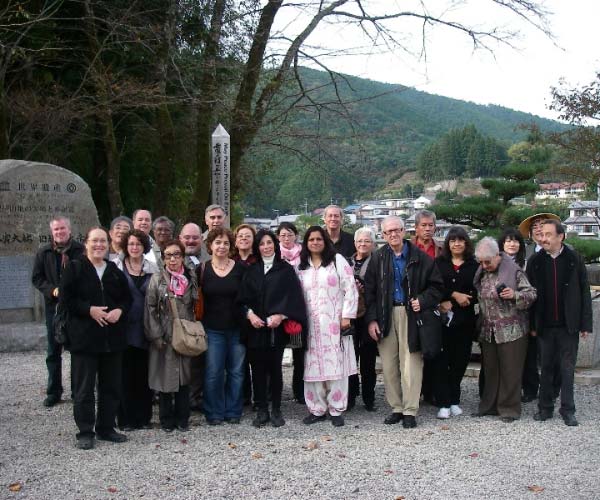
Is one of ICOMOS International Scientific Committees.
It was born thanks to a group of ICOMOS members from very diverse regions, who, from the submission and subsequent nomination as a World Heritage of the Camino de Santiago in 1993, were given the task of delineating and defining this new category to establish a methodology appropriate to the meaning of this concept. As a result of its intensive efforts and a long process of international consultations, the CIIC has developed a definition and methodology, reflected in its Charter of Cultural Itineraries, ratified by the 16th ICOMOS General Assembly, in Quebec, Canada, October 4, 2008.
The CIIC has cooperated closely with other international ICOMOS committees to support them in identifying and documenting heritage sites that fall within the multidisciplinary context of Cultural Routes, thus having an important role in the expansion from this new experience to all areas of the world, making Cultural Routes an element of interest in the maintenance and promotion of World Peace. The CIIC promoted and adopted the Ise Declaration (Japan) for Peace in World Heritage on 1 November 2009, a text that was adopted by ICOMOS in Paris, France, by Resolution 17GA 2011/29.

Over the years, human beings have generated processes and social interactions that are perceived in the customs and traditions of each group. Historically, the conservation of the heritage has been left in charge of the community to which it belongs. But in the 19th century, this process began to systematize when the various sciences and classification of history appeared.
At the international level, after the two great wars and the emergence of the UN, specialists in various professions expressed concern about heritage conservation and promulgated the Venice Charter in 1964. A year later in Warsaw, Poland is formed by the Paris-based International Council on Sites and Monuments (ICOMOS).
The need for the establishment of the CIIC arose with the emergence of cultural routes as a new category of heritage, which the nomination of the world heritage of the Camino de Santiago brought to the central stage of international attention. A first meeting in November 1994 contributed but did not fully achieve the task of outlining and defining this new category and establishing an appropriate methodology. Because of this, a group of ICOMOS members from very diverse regions of the world began working on this issue, resulting in the creation of the CIIC in 1998.
Heritage is the footprint of humanity in its passage through the earth.
After fifty years, heritage analyses have led ICOMOS to consider at least twenty-nine categories that are led by the respective scientific committees; this is how the analysis of Cultural Routes, a new category of heritage, was born.

El Comité Internacional de Itinerarios Culturales (CIIC) is one of ICOMOS International Scientific Committees.
CONTACT
LANGUAGE
*The images are subject to copyright and their reproduction is prohibited.
Copyright © CIIC ICOMOS. All rights reserved.